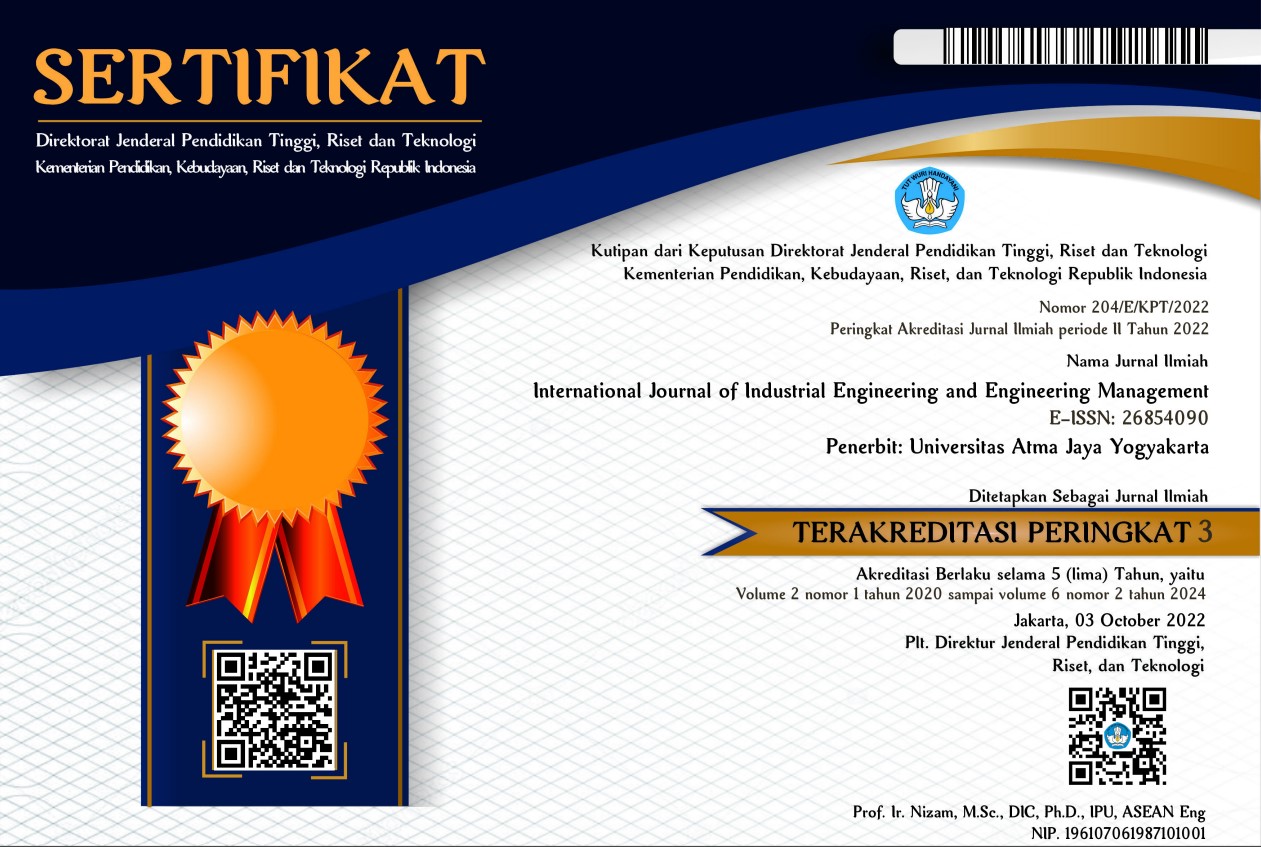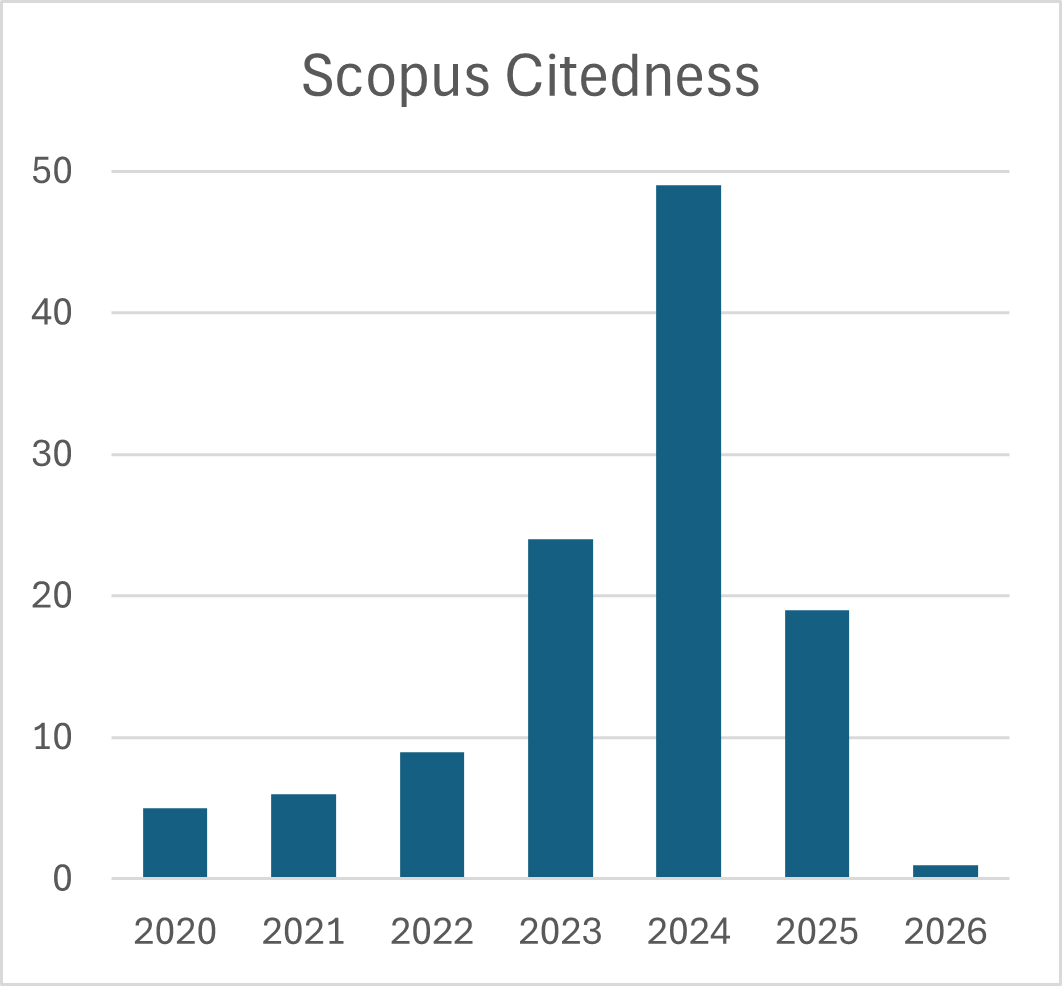A Joint Replenishment Inventory Model to Control Multi-Item Medicines with Consideration of Space Requirements in the Hospital
DOI:
https://doi.org/10.24002/ijieem.v2i2.4190Keywords:
multi-item medicines, expired medicines, joint replenishment, space requirements.Abstract
Medicines can be considered the most widely used medical expenditures in hospitals. To reduce the medicines expenses in the hospital, the term of inventory control is applied. Medicines must be controlled by considering the expiry dates and the probabilistic demand from the customers. Therefore, it is necessary to develop an inventory model that can be suitable to control medicines by minimizing the expired medicines, total inventory costs, and dealing with unpredictable demand. The purpose of this research is to develop an inventory model for determining optimum replenishment time and order quantities and space requirements for multi-item medicines with consideration of expiry dates of the medicines and all medicines are being purchased in a single purchase order so that the total inventory costs in hospitals can be minimized. The result is that the proposed inventory model results in optimum space requirements and the lowest inventory costs. Therefore, hospitals must order medicines based on the optimum order quantity.References
Agada, P.O. & Ogwuche, E.H. (2017). A probabilistic economic order quantity (EOQ) model for inventory management of drugs and hospital consumables. FUW Trends in Science and Technology Journal, 2(2), 737-742.
Almarsdóttir, A.B. & Traulsen, J.M. (2005). Cost-containment as part of pharmaceutical policy. Pharmacy World and Science, 27, 144-148.
Balasubramanian, N. & Nivetheni, D. (2018). A study of multi-criteria pharma inventory classification for a hospital. International Journal of Advance Research and Innovative Ideas in Education, 4(3), 516-521.
Dwivedi, S., Kumar, A. & Kothiyal, P. (2012). Inventory management: A tool for identifying items that need greater attention for control. The Pharma Innovation, 1(7), 125-129.
El-Wakeel, M. F. (2011). Constrained backorder inventory system with varying order cost: Lead time demand uniformly distributed. Journal of King Saud University - Science, 24, 285-286.
Kelle, P., Woosley, J. & Schneider, H. (2012). Pharmaceutical supply chain specifics and inventory solutions for a hospital case. Operations Research for Health Care, 1(2-3), 54-63.
Li, J., Liu, L., Hu, H., Zhao, Qi., & Guo, L. (2018). An inventory model for deteriorating drugs with stochastic lead time. International Journal of Environmental Research and Public Health, 15(12), 1-20.
Onkundi, K.E.H. & Bichanga, W.O. (2016). Factors influencing inventory management performance in public health sector: A case study of public health sector in Kisii country. European Journal of Business and Management, 8(12), 158-165.
Palanisamy, M. & Ranganathan, R. (2016). Prioritized ABC-FSN analysis of inventory management in private hospital pharmacy followed by questionnaire. International Research Journal of Pharmacy, 7(12), 104-113.
Pratiwi, A., Wicaksono, P. A. & Suliantoro, A., 2018. Usulan Perencanaan Pengendalian Persediaan Obat dengan Pendekatan Continious Review Model dengan Mempertimbangkan Faktor Expiry Product dan Return. . Industrial Engineering Online Journal, 7(1), 1-9.
Puspitasari, R., Arvianto, A., Rinawati, D. & Laksono, P.W. (2016). Q inventory model with product expiry and product return on pharmaceutical product at hospital Kardinah. 2nd International Conference of Industrial, Mechanical, Electrical, Chemical Engineering (ICIMECE), Yogyakarta, 33-37.
Ramanathan, R. (2006). ABC inventory classification with multi-criteria using weighted linear optimization. Computer & Operations Research, 33(3), 695-700.
Rusli, E., Prassetiyo, H., & Fitria, L. (2014). Rancangan system pengendalian persediaan bahan baku sandal dengan menggunakan metode single item single supplier dan multi item single supplier (studi kasus di PT Cat Style). Jurnal Online Institut Teknologi Nasional, 4(2), 96-107.
Uthayakumar, R. & Priyan, S. (2013). Pharmaceutical supply chain and inventory management strategies: Optimization for a pharmaceutical company and a hospital. Operations Research for Health Care, 2(3), 52-64.
Wanke, P.F. (2008). The uniform distribution as a first practical approach to new product inventory management. International Journal of Production Economics,114(2), 811-819.








